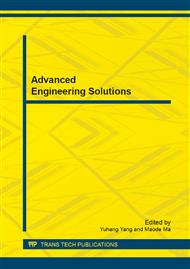p.811
p.815
p.819
p.823
p.827
p.832
p.838
p.843
p.850
Low Carbon Technology Assessment and Planning
Abstract:
This paper aims to analyze the planning method of low carbon technologies. It is a follow up to our previous analysis of sustainability assessment of low carbon strategies concerning economic, environmental and social terms. Construction sector in Chongming Island, Shanghai is analyzed as a case study. Eleven main building energy saving technologies are evaluated, and CO2 emission reduction amount and required building areas in 2030 in Chongming Island are set by using Decoupling Theory and Goal Programming method. The minimum emission reduction cost is found as 7.87×108 RMB under low carbon scenario and 9.52×108 RMB under ideal scenario. Planning analysis result also show that the low carbon scenario is possible to meet as the required building area is around 20% of the estimated building area in 2030. The ideal scenario will require more intensive energy saving technology application as the building area requirement is found around 40%.
Info:
Periodical:
Pages:
827-831
Citation:
Online since:
July 2014
Authors:
Keywords:
Price:
Сopyright:
© 2014 Trans Tech Publications Ltd. All Rights Reserved
Share:
Citation:


